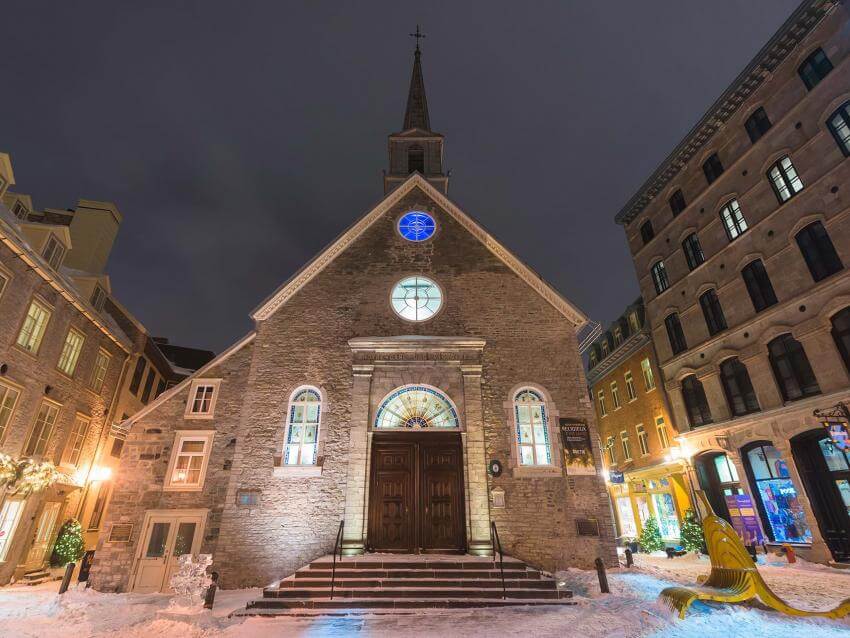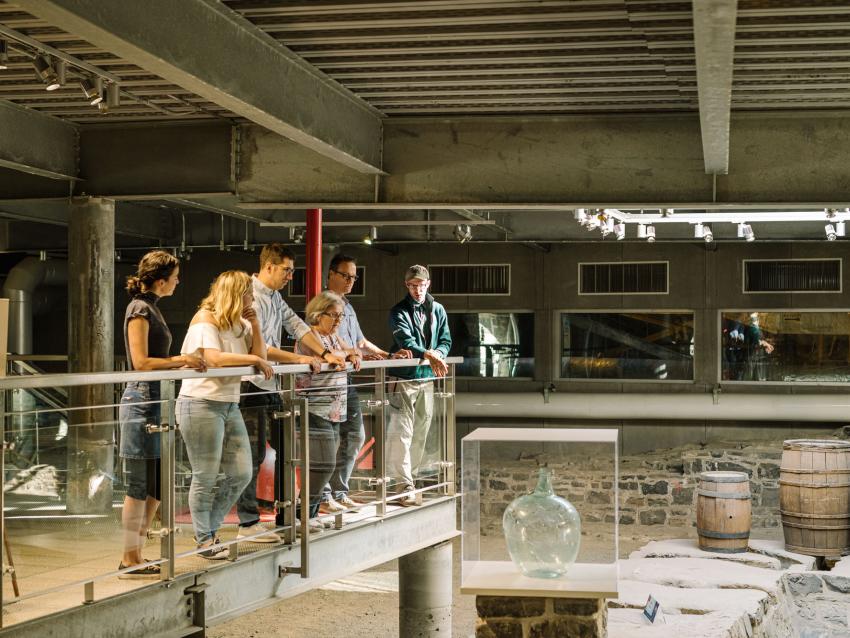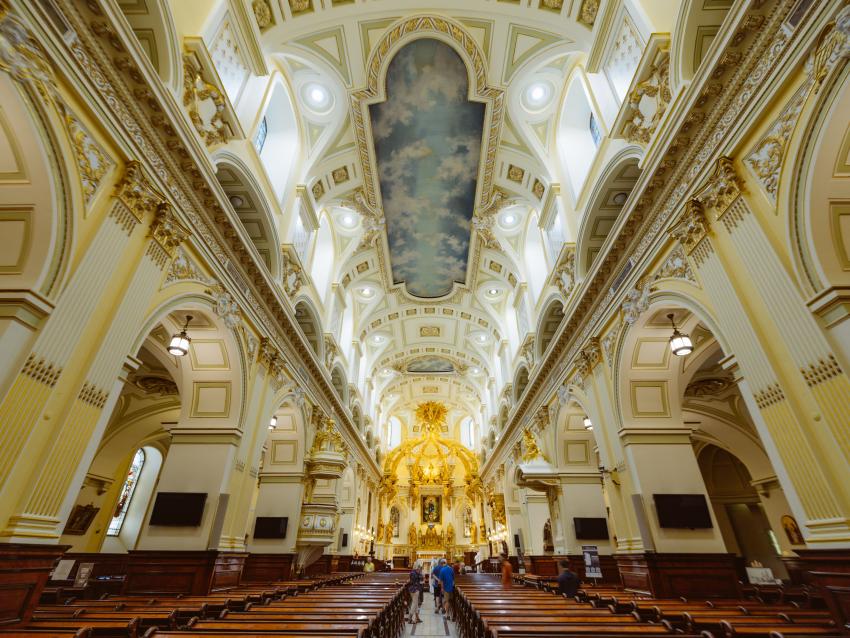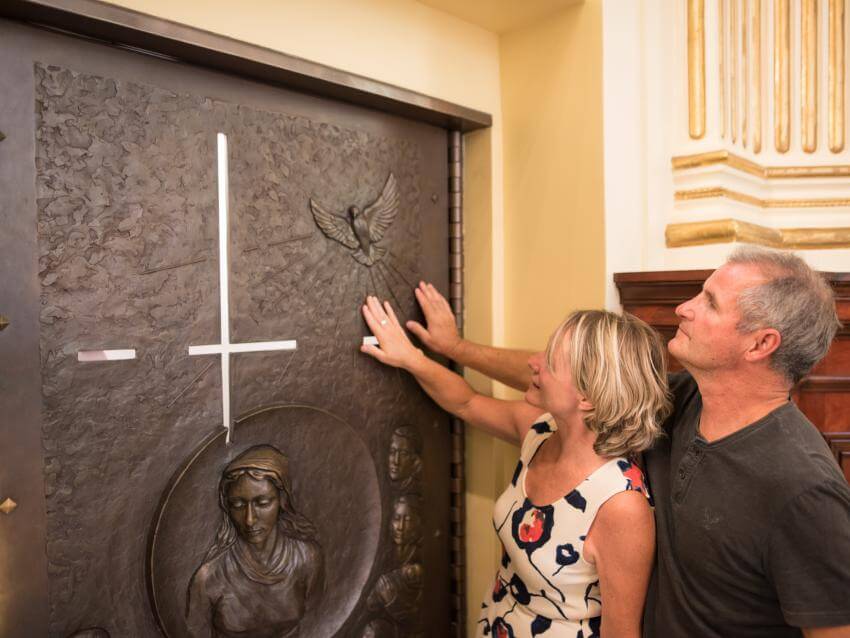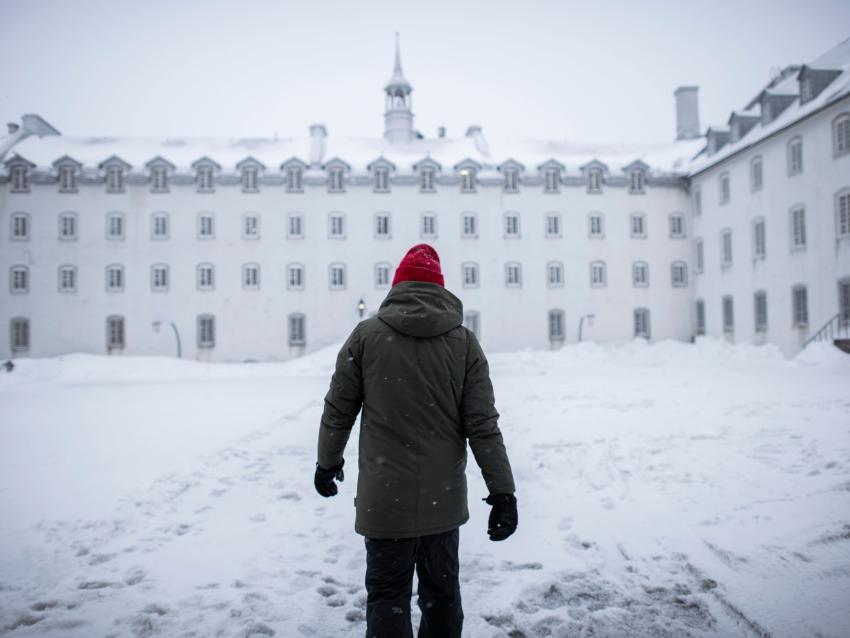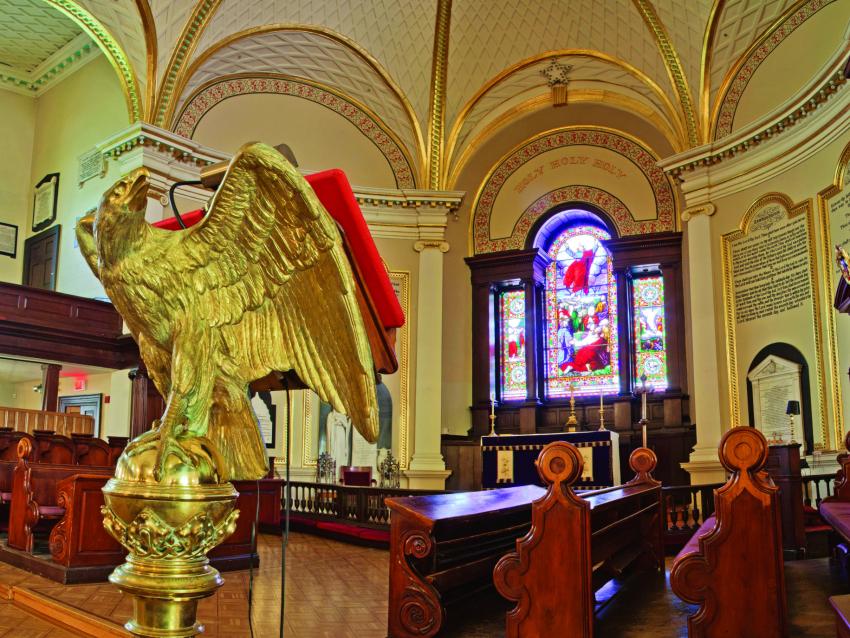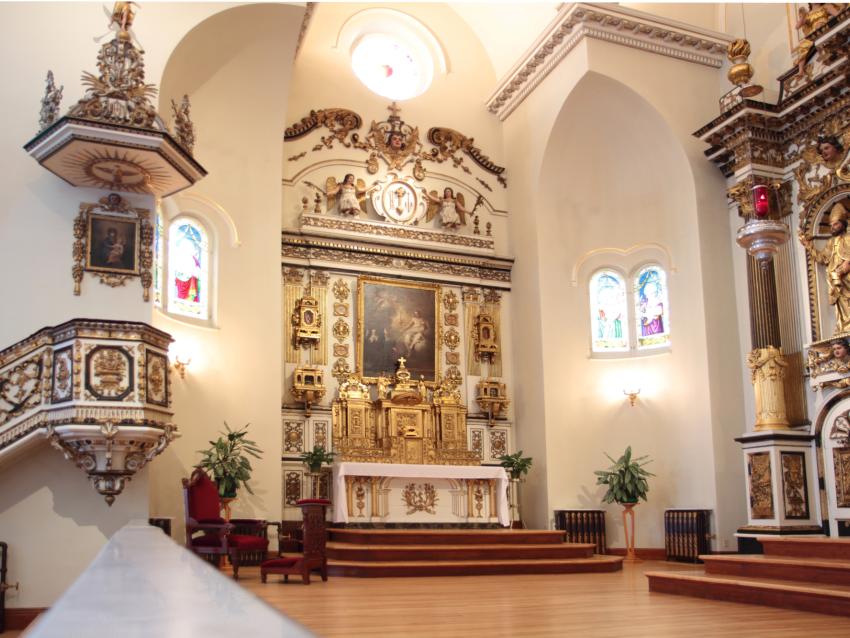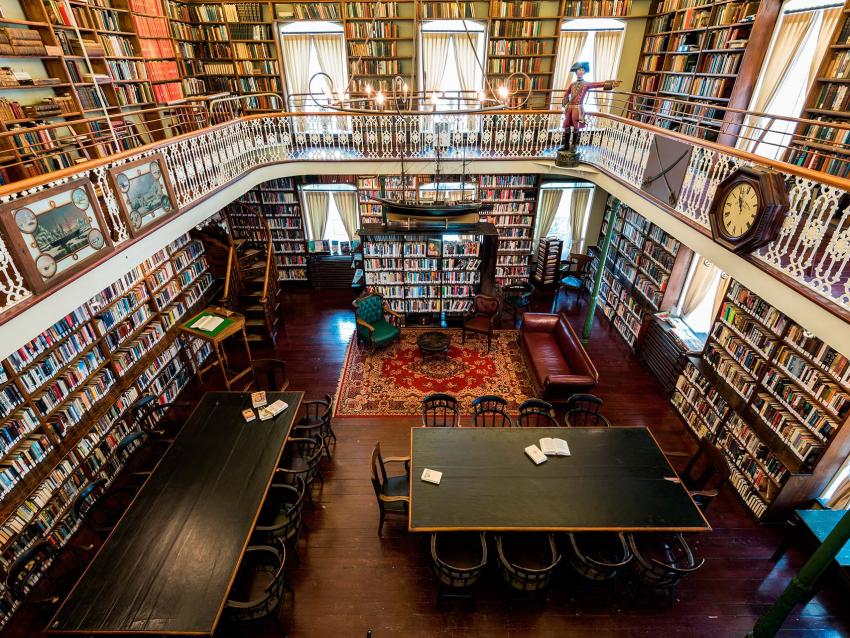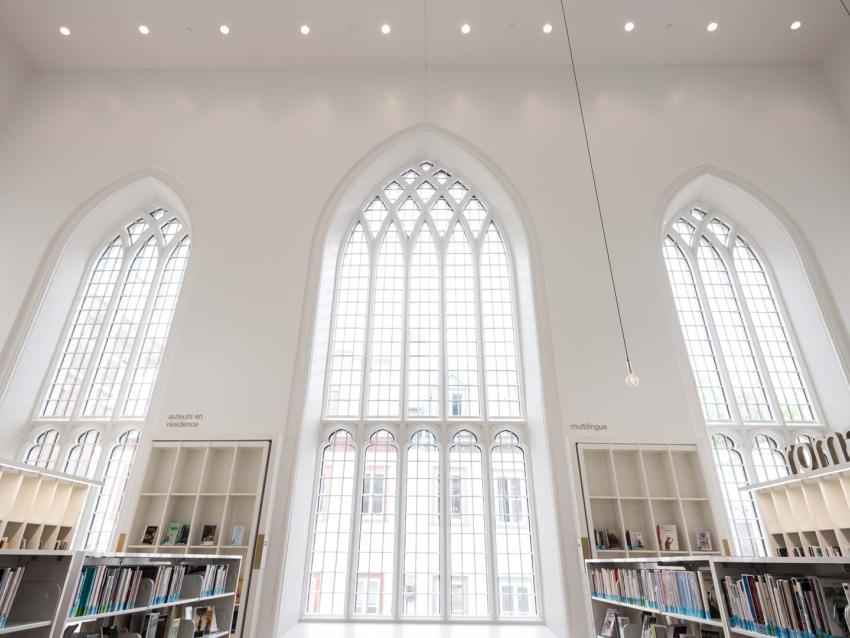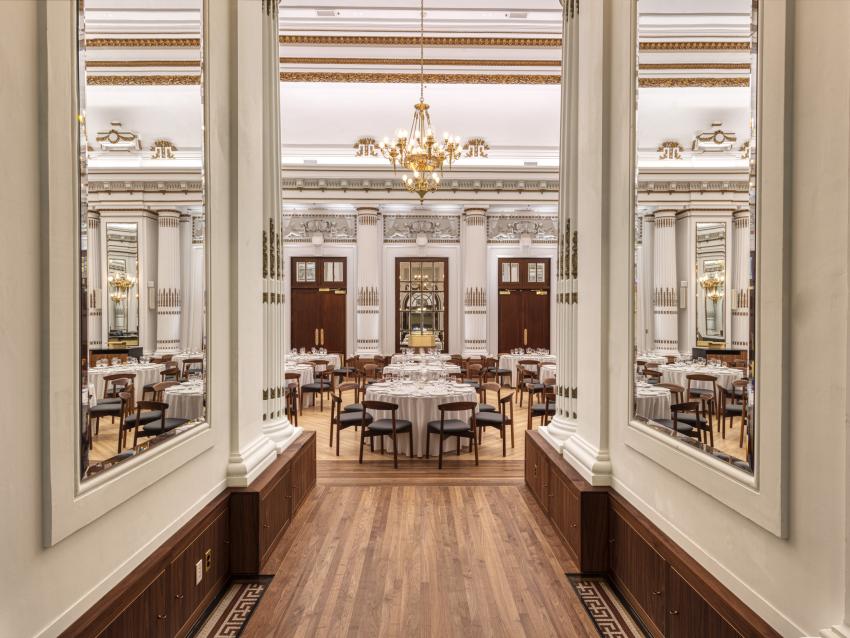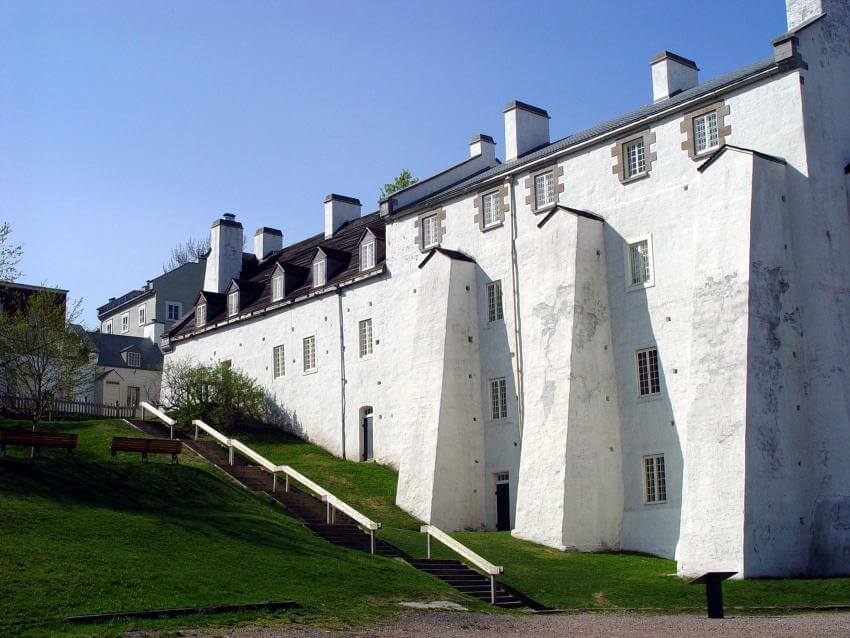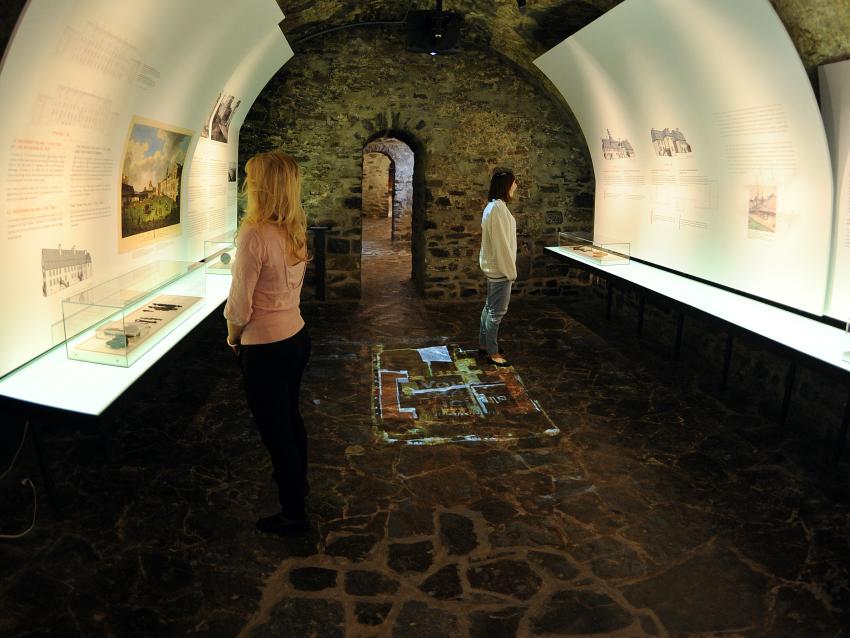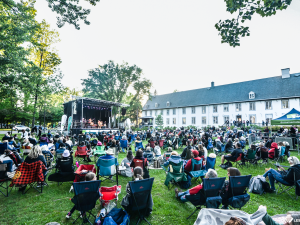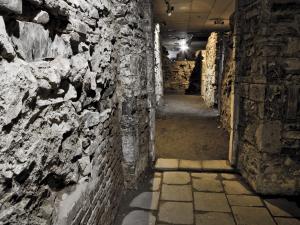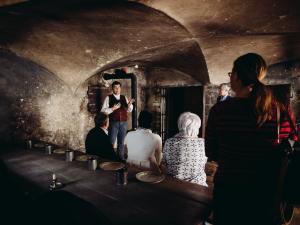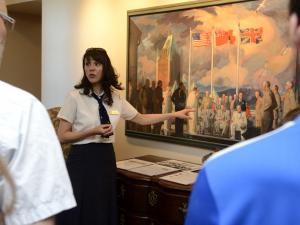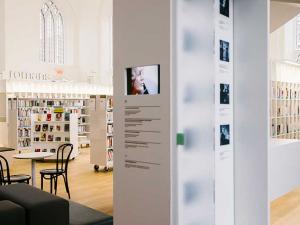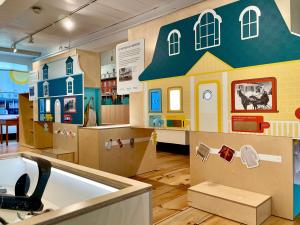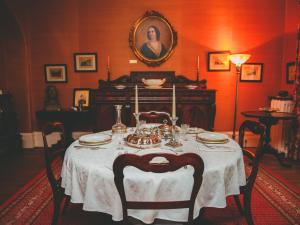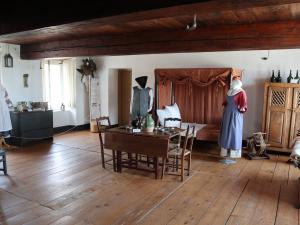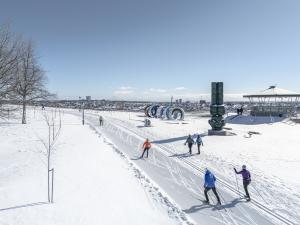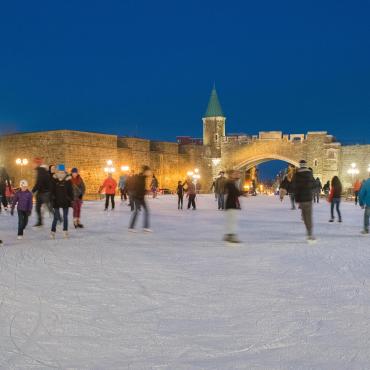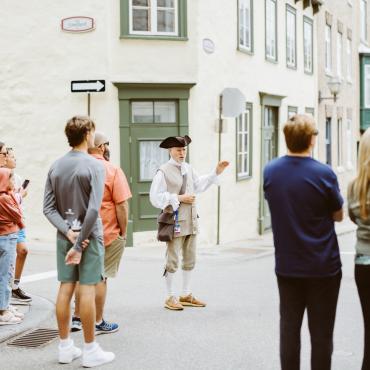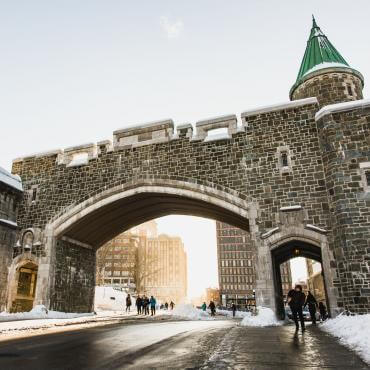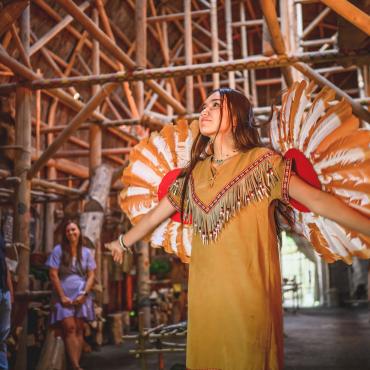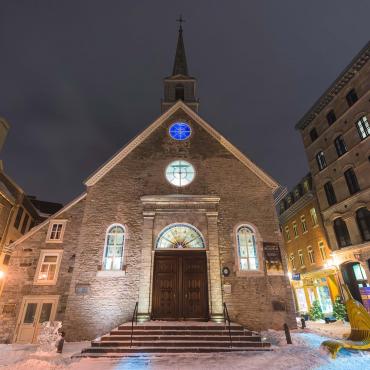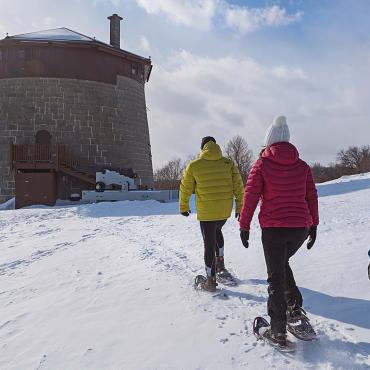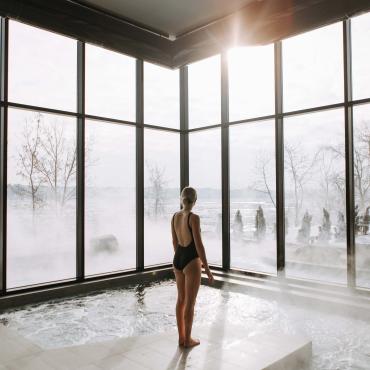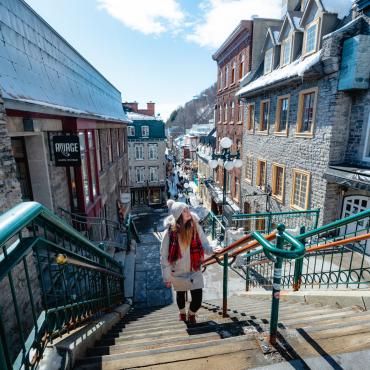12 Historical Gems You Should Not Miss in Old Québec

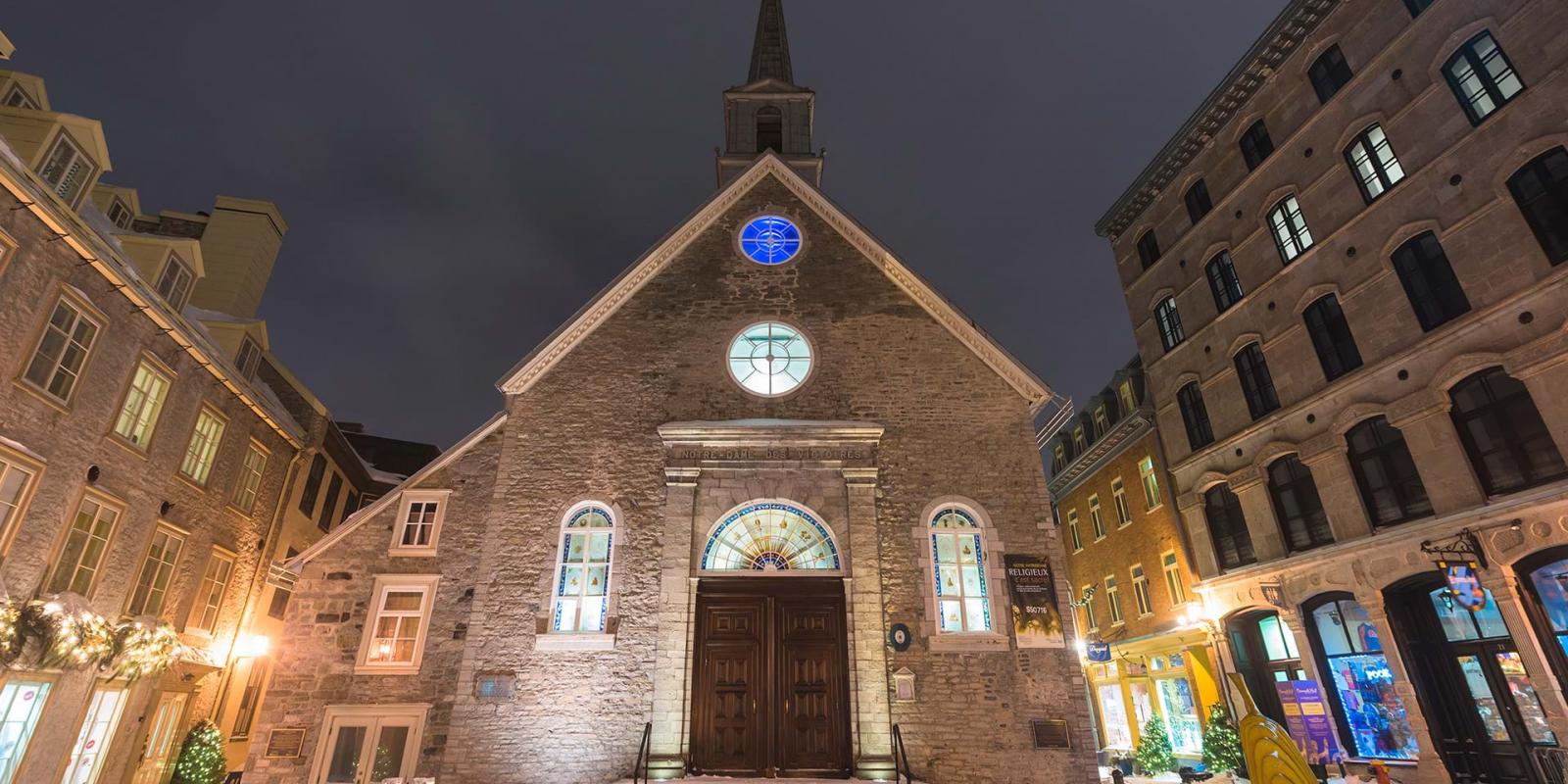
Visitors come to Québec City from around the world to enjoy the fascinating European atmosphere of this old walled town, which is so unlike other cities in North America. Listed as a UNESCO World Heritage Site since 1985, Old Québec is a true gem of history and culture. This year, the city is also celebrating the 40th anniversary of its World Heritage designation — a perfect occasion to rediscover its many treasures.
Many people are happy to just take in the ambiance, and stick to the main attractions, but there is so much more to discover. We invite you to stay a little longer and dig deeper, to explore “hidden treasures” that you might not find on your own. Plus, all these historic sites are within easy walking distance of each other. Follow the guide!
 Notre-Dame-des-Victoires church, Francis Gagnon
Notre-Dame-des-Victoires church, Francis Gagnon
1Notre-Dame des Victoires Church
In Notre-Dame des Victoires Church, which dates from 1688, visitors can see one of the most fascinating objects that has survived from the days of New France: a model of a French warship, suspended from the ceiling. The Marquis de Tracy ordered its construction to thank God for a safe passage across the Atlantic Ocean, in 1664. Originally called l’Église de l’Enfant Jésus, (The Church of the Christ Child), the name of this church was changed twice, after two victories over the English: first, to Notre-Dame-de-la Victoire,(Our Lady of Victory) and then to Notre-Dame-des-Victoires, (Our Lady of Victories).
Visitors are welcome to enter anytime in summer and on Sundays in winter, free of charge.
 Lieu historique national des Forts-et-Châteaux-Saint-Louis
Lieu historique national des Forts-et-Châteaux-Saint-Louis
2Saint-Louis Forts and Châteaux National Historic Site
Beside the Château Frontenac, visitors can descend beneath the Dufferin Terrace to see the archeological site of Saint-Louis Forts and Châteaux, where 32 Governors General resided over the centuries, during the French and English regimes. Visit the remains of the Chateau St. Louis complex, including an 18th-century kitchen and an icehouse dating from 1771. More than 120 artifacts are displayed, some dating back to the time of Samuel de Champlain, who built a fort and residence on the site in 1620.
Open during the summer season only. Entrance tickets can be purchased at the Frontenac kiosk, located behind the statue of Samuel de Champlain. Entrance is free of charge for those 17 years of age and under.
 Notre-Dame de Québec Basilica-Cathedral, Étienne Dionne
Notre-Dame de Québec Basilica-Cathedral, Étienne Dionne Jeff Frenette
Jeff Frenette
3Basilica Cathedral Notre-Dame de Québec
Notre-Dame de Québec Basilica became the first Catholic cathedral in North America in 1674. Visitors who admire the spectacular golden baldacchino, over the main altar, often don’t realize that they can also descend into the crypt, where many governors of New France and Catholic bishops are buried.
One can also view the Holy Door, which pilgrims and visitors can only pass through when a Holy Year is declared by the Pope. In 2024, it is possible to pass through the Holy Door during the 350th anniversary of the diocese.
The crypt is open during the summer season only, but you can enter the Basilica at any time, even while there is construction work in front of the church.
 Gaëlle Leroyer
Gaëlle Leroyer
4The Courtyard of the Seminary of Québec
The courtyard of the Seminary of Québec, surrounded by steep-roofed stone buildings, evokes the appearance of Québec City as it was in the days of New France. Visitors who venture into this courtyard feel as if they have left North America and suddenly found themselves in Europe.
All are welcome to enter the courtyard, free of charge, by passing through the gate and archway beside Notre-Dame Basilica.
 Luc-Antoine Couturier
Luc-Antoine Couturier
5Cathedral of the Holy Trinity
With superb stained-glass windows made by British craftsmen, and monuments worthy of Westminster Abbey, the Cathedral of the Holy Trinity is a quintessentially English church in the heart of French-speaking Québec. Constructed between 1800 and 1804, this historic church was the first Anglican Cathedral to be built outside the British Isles.
The coat of arms of King George III is displayed on the Royal Pew, and there is an exhibition of magnificent communion silver, made specially for this cathedral by the Royal Goldsmiths in London. Marble plaques and monuments evoke the time when Québec City became Capital of British North America, after the American Revolution.
Visitors are welcome to visit the church on their own. There is an entrance fee during the summer season, when guided tours are also available.
 Pôle culturel du Monastère des Ursulines
Pôle culturel du Monastère des Ursulines
6Ursuline Chapel and Museum
The Ursuline nuns came to Québec in 1639, to educate Amerindian girls and the French girls of the settlement. The nuns brought remarkable artistic skills to the French colony, applying gold leaf to wooden sculptures and making exquisite embroidered altar frontals with silver and gold threads, and the finest silks.
The chapel contains the oldest sculptural ensemble in the city, dating back to the 1720s and 30s. The exceptional works on display in the chapel also include 17th and 18th-century French paintings that were brought to Canada in the early 19th century, after escaping destruction during the French Revolution. At the museum there are also exhibitions that tell the fascinating story of how education for girls evolved over the centuries.
The chapel and museum have separate entrances, facing each other. Entrance to the chapel is free of charge, while there is an entrance fee for the museum.
 Morrin Centre, Jeff Frenette Photography
Morrin Centre, Jeff Frenette Photography
7Morrin Centre
Originally built as a prison, between 1808 and 1813, Morrin Centre was converted into a college in 1868. Since the 1860s the building has been home to the Quebec Literary and Historical Society, the oldest learned society in Canada. Today the building is a cultural centre, devoted to the history of the English-speaking community in Québec City.
The Society’s library is one of the most remarkable interior spaces in Old Québec. With its bookshelves, rising two storeys, and its winding stair leading to a second-floor gallery, the library has retained the Victorian atmosphere of its 19th-century origins.
Guided tours are available, taking visitors to see the library, the restored classrooms and laboratory of the former college. The tours also lead visitors into forbidding prison cells, where one can still see graffiti scratched on the walls in the 19th century, and iron rings to which some prisoners were chained.
 Maison de la Littérature, Jeff Frenette Photography
Maison de la Littérature, Jeff Frenette Photography
8Maison de la Littérature
Maison de la Littérature, located in a former 19th century church, houses a beautiful public library and literary cultural center. Combining tradition with modernity, its inspiring contemporary interior is filled with light and highly Instagrammable.
Visitors are welcome to enter, free of charge.
 Collection Assemblée nationale, Claude Mathieu photographe
Collection Assemblée nationale, Claude Mathieu photographe
9Parliament Building
With its imposing facade, covered with the bronze statues, the Parliament Building of Québec is one of the most impressive public buildings in the province. Guided tours of the ornate interior are available, free of charge. Unlike many other legislative buildings in North America, it is possible to enjoy the privilege of dining in the elegant Restaurant le Parlementaire, without having to ask for special permission from a politician.
 Ville de Québec
Ville de Québec
10Artillery Park
In Artillery Park, which is part of the Fortifications of Québec National Historic Site, there are military buildings that span more than 250 years. In the Arsenal Foundry, you can see a huge scale-model of Québec, created in 1806-1809, to help plan improvements to the fortifications.
For access to the site, go to the reception desk in the red-brick Arsenal Foundry building, located beside the St. John Gate. Open during the summer season only. Admission is free for those 17 years of age and under.
 Monastère des Augustines
Monastère des Augustines
11Monastère des Augustines
Designated as the Wellness Destination of the Year by National Geographic in 2016, the Monastère des Augustines is one of Québec City’s most inspiring “hidden treasures.” With its walled gardens and historic buildings, this peaceful haven was established here in 1644 by the Augustinian sisters, who had come to Quebec in 1639, to found the first hospital in North America.
Today the Monastère is run by a non-profit organization that welcomes people of all cultures and beliefs. You can stay in the convent, eat delicious meals in their restaurant, visit their museum and historic buildings, and take part in wellness activities that include yoga and meditation. Works of art and objects of daily life from the past are displayed throughout the Monastère. In the museum, an extensive collection of medical instruments reveals fascinating aspects of the history of medical care over the centuries.
You can visit the museum on your own, or request a guided tour. You don’t have to stay at the Monastère to eat in their restaurant, but a reservation is required.
 L'îlot des Palais
L'îlot des Palais
12The Îlot des Palais
The Îlot des Palais was one of the most important seats of power in the French colony, as well as a major industrial site over the centuries. This is a “hidden gem” that is well worth discovering! Archeologists have undertaken 65 excavations on the site and have uncovered over 500,000 artifacts. A brewery was built there in 1668, before being transformed into the Palace of the Intendant, the chief administrator of the colony, in 1683. The residence had to be rebuilt three times, after destruction by fire. Then, in 1775, the edifice was destroyed once more – this time, by British cannon fire – when American revolutionaries took refuge in it, while laying siege to the city. In 1852, a brewery was established on the site once more, and the location returned to its original function.
Historic artifacts are displayed in the vast 18th-century vaulted basement of the former palace, where visitors can learn about the history of the site through a new immersive exhibition. We also recommend trying one of their Geocaching rallies: high-tech treasure hunts that use GPS to explore the history of the Îlot des Palais, and Québec’s Old City.
Our Favourite Activities in Your Inbox
Sign up for our newsletter to receive events suggestions and not-to-be-missed activities in Québec City.
By completing this form I agree to receive communications in english from Destination Québec cité.

What are your interests?
Thank you for completing your newsletter subscription.
You will soon receive our emails to help you plan the perfect stay for you.
Did you know?
The dramatic silhouette of the Château Frontenac, with its towers, turrets, and cone-shaped roofs dominates the Old City. One of the most famous buildings in Canada cannot be described as a “hidden treasure”, but you can discover some of the “secrets” of the history of this great hotel by taking a tour with a costumed guide.

